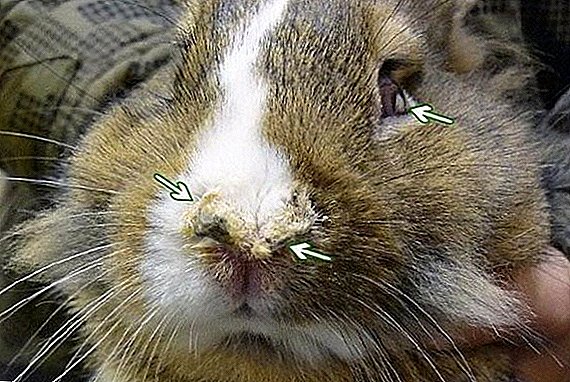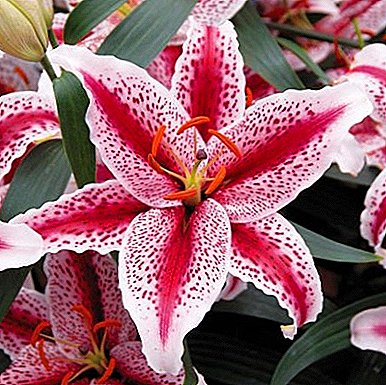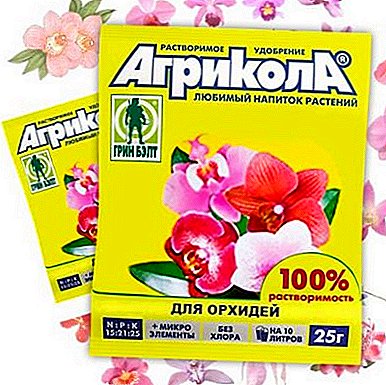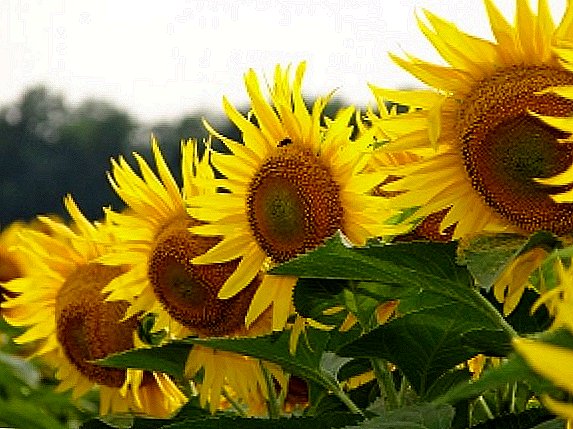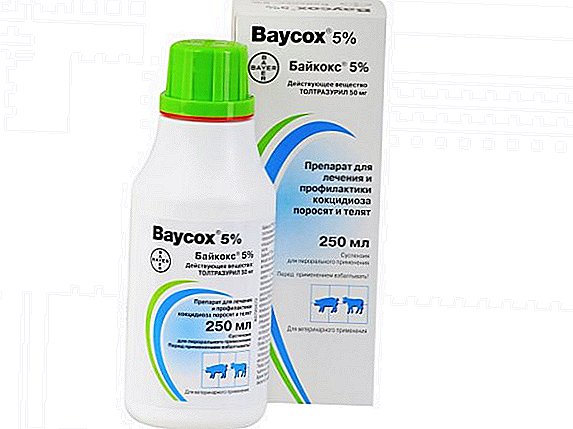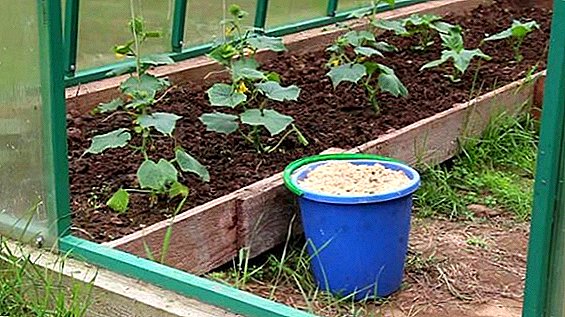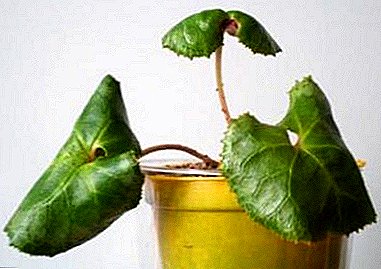
Cyclamen is one of the favorite types of plants, popular among people who want to create home comfort with fresh flowers. Its blooming surprises with its colorfulness, and care of the flower is simple - the main thing is to prevent the beginning problems in time.
In the article we will look at the particular care for cyclamen, the reasons for folding the sheets and how to counteract this.
Care features
Lovers of indoor flowers speak of cyclamen differently: some believe that the flower is unpretentious, while others argue that this is a capricious plant. In fact Cyclamen needs sunlight, but does not tolerate the direct rays of the sun..
In addition, the flower should be kept at low temperatures - in winter it should be no higher than 14 ° C, in summer - up to 25 ° C. When watering, the flower should not be poured, and most importantly - not wetting the buds with tubers, they can rot from that. How to save a flooded flower, you will learn in this article.
Reference. To cool the plant in the summer, you can use ice, just sometimes putting it in the pan.
Cyclamen blooms in the cold season, beginning in late autumn and ending in March. During this period, it is advisable not to overheat the flower. The dormant period of the plant is not pronounced in European cyclamen, but in Persian there are expressive signs of this period:
- stops blooming;
- the leaves turn yellow;
- there may be cracks on the tuber.
Leaf blades roll up: norm or pathology?
Twisting leaves, especially sharp, should be cause for concern.. On the one hand, this may be a signal of the beginning of a dormant period, however, if for some unknown reason, the leaves suddenly twisted together with the flowers, and at the same time the flower released many new young leaves, the thing is different.
Some diseases of cyclamen can manifest themselves in curling and yellowing of the leaves, so it is very important to notice the problem in time and not confuse the disease with the onset of the dormant period.
A photo
Check out photos of cyclamen, whose leaves are curled down:



Possible reasons
Why do cyclamen leaves curled? Consider common causes, discarding the option of transition to rest mode.
Nutrition
Since the flower needs feeding, it is important to feed it correctly.. If the top dressing contains a large amount of nitrogen, the plant's immunity is reduced. In addition, if the flower lacks nutrition, the leaves grow small, and the cyclamen does not bloom.
It is necessary to feed cyclamen constantly, for this purpose it is better to use complex mineral fertilizers. Especially fertilization is recommended during the flowering period.
Air temperature
Cyclamen loves cool rooms, in no case can not put it near batteries and other means of heating - the flower will immediately respond to high temperatures. During the flowering period, it is better to remove the plant in a room where it is cool: the ideal temperature for it will be about 14 ° C. Since it is almost impossible to maintain such a temperature in summer, it is necessary to take care of transporting the flower or cooling it in advance.
In the same time you can not leave a flower in a draft - the plant does not tolerate constant movement of cold air. Enough to ventilate a cool room.
Pot size
When transplanting cyclamen, you need to remember that the flower does not need a lot of extra space, so it is important to choose a pot that will not be spacious. The size of the pot should depend on the age of the flower - a diameter of up to 8 cm is permissible for ages 1-1.5 years, and a diameter of up to 15 cm - for a flower aged about 3 years.
Pests
 As with any plant, insects can harm cyclamen:
As with any plant, insects can harm cyclamen:
- Aphid. Cyclamen is more common than other pests and often completely covers the leaves.
- Thrips. Appear under the condition of high temperature and lack of moisture in the air.
- Cyclamen tick. May hit the leaves with increased humidity. Externally similar to settled dust.
To identify pests, you need to carefully consider the leaves on both sides. Quite often, they "hide" on the reverse side of the leaves.
In more detail about cyclamen pests we wrote in another material.
The soil
The process of watering the plant is very important: after transplanting, you need to water the flower little by little, and only when the owner sees new leaves, you can gradually increase the amount of watering to normal and start feeding cyclamen.
During watering you need to make sure that moisture does not fall on the tuber. If this happens, you need to remove moisture using a dry cloth. In no case it is impossible to overmoisten the soil - this may lead to rotting of the tubers.
Also, the soil may be contaminated initially. In order to check this, you need to get a flower from the pot and carefully examine the tuber. If it has integrity problems, soft spots or dents, such pieces should be well cleaned from the ground and carefully cut. It is better to dry the cut areas and treat with crushed activated carbon. Then transplant into another pot.
What to do with the disease?
The procedure for dealing with a flower disease depends only on the cause of the twisting of the leaves. It is important to first ensure that the flower does not go into rest mode - in this case, the leaves turn yellow and curl gradually.
- Malnutrition. If the flower has not been fed for a long time and the reason is lack of food, you can purchase universal mineral fertilizer and feed the cyclamen.
- Heat. In the case when the cause of leaf curling is at an elevated temperature, the plant should be moved to a cooler room. It is important to monitor the temperature, and you can use an ordinary room thermometer for this.
- Big pot. When a flower has a lot of space in a pot, it is necessary to transplant it into a new pot, which is about the size of a tuber.
- The appearance of pests. When pests are found, it is necessary to isolate the flower from other indoor plants, and be sure to identify the type of pest:
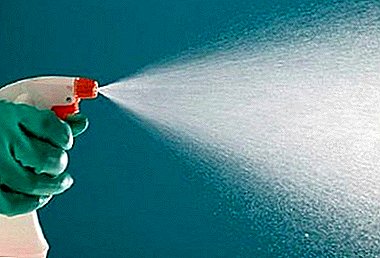 the fight against aphids consists in treating the plant with insecticides - it can be wiped with a cotton pad dipped in a solution or sprayed from a sprayer;
the fight against aphids consists in treating the plant with insecticides - it can be wiped with a cotton pad dipped in a solution or sprayed from a sprayer;- spraying of insecticides will also be suitable to destroy thrips;
- Insecticides do not act on the cyclamen mite - it is necessary to cut off the damaged leaves, flowers and buds, to treat with chemical acaricides.
- Bad soil. If there are problems with the soil, you can transplant the flower into a new soil, after removing the soft and rotten parts of the tuber. The pot is also desirable to change.
Prevention
To protect the flower from disease, it is enough to monitor the environment, especially the temperature of the air in the room, to prevent sunlight from falling on the leaves, to follow the rules for watering.
If it was decided to transplant due to the fact that the flower no longer fits in the old pot, after changing the "housing" you need to monitor the condition of the leaves and tubers. Cyclamen should be watered carefully at the very edge of the pot.. You can also use the pan - pour water into it, and put the flower so that the water covers at least half of the tuber. After some time, you need to get the cyclamen, and let the water drain well. About what to do if you flooded the flower, find out here.
Important! Feeding should be carried out about once a month, excluding the period of rest - when the plant is asleep, it is not necessary to feed it.
Periodic spraying of insecticides will help protect against pests.. In conclusion, it should be noted that with proper care, similar problems with the flower will not arise.
Ventilate the room regularly - this will avoid overwetting and rotting. Observance of elementary security measures will allow you to enjoy beautiful flowering throughout the winter and will ensure a good condition of the flower that can be propagated.


 the fight against aphids consists in treating the plant with insecticides - it can be wiped with a cotton pad dipped in a solution or sprayed from a sprayer;
the fight against aphids consists in treating the plant with insecticides - it can be wiped with a cotton pad dipped in a solution or sprayed from a sprayer;